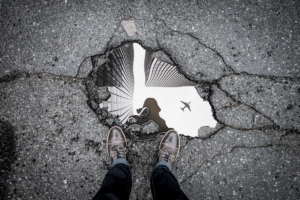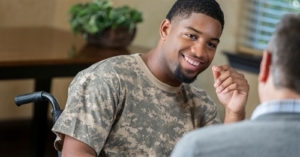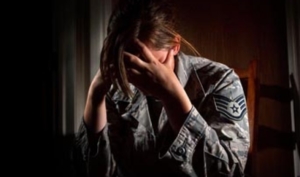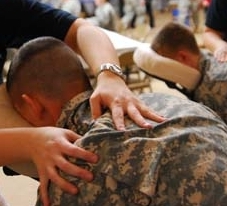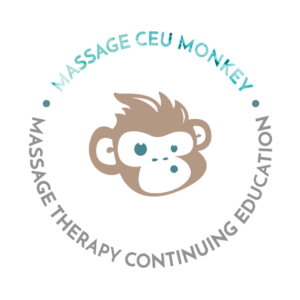Veterans & PTSD – How Massage Therapy Can Help – Massage CEU
What is Post Traumatic Stress Disorder (PTSD)?
PTSD is defined as a mental health condition that is brought on by experiencing or witnessing a traumatic event. It has been said that 70% of adults in the U.S have been through drama to cause PTSD. Most of the time PTSD is associated with the war, but anyone can develop PTSD. Abuse victims, people involved in natural disasters, police officers and ambulance personnel who arrive on a traumatic scene, and people who are involved in any other type of traumatic event such as a car accident can also experience PTSD.
What are symptoms of PTSD?
It’s hard for some people to admit or understand that they are dealing with PTSD, as they can think that the traumatic event couldn’t affect them in that way. But it’s never a safe bet to ignore signs and symptoms of PTSD and if you are showing symptoms, it’s best to talk to your doctor to be properly diagnosed. There are certain signs and symptoms to look out for such as:
- Memories or Intrusive Thoughts: This consists of flashbacks of the traumatic event. These can appear suddenly while you’re out living your day-to-day life, or it can be seen in reoccurring dreams or nightmares. These can cause feelings of nervousness, fear, guilt, or suspicion.
- Avoidance of reminders: Certain places, objects, or people can serve as triggers to your painful memories. Some people think that avoiding these things will slowly make the PTSD go away, but it’s a bad coping mechanism of dealing with it. They may also not want to discuss the traumatic event and pretend like it never happened.
- Negative thoughts: Negative thoughts can be about themselves or about other people. They may feel as though they cannot trust people and this makes them detach from the world. They lose interest in their favorite activities and they live in a constant fear.
- Reactive symptoms: This can be seen in mood changes, such as extreme outbursts of anger or in reckless behavior, such as driving recklessly and not caring about a possible negative outcome.
A Massage Therapist’s Approach on Battling PTSD
Massage therapy can promote better sleep patterns, relax tension, and promote circulation. Massage therapists can help these PTSD victims with stress relief, decreasing anxiety, reducing depression, and improving their mood. The main reason someone with PTSD seeks out help from massage is because of their problem with dissociation. They want to find themselves again and massage therapy can help them. These people have been through so much trauma and a massage session can truly give them a sense of comfort, safety, and control that they feel as though they’ve lost.
In a 2012 research study, researchers were focused on finding out which therapies could best help veterans dealing with PTSD. Massage therapy reported the most significant reductions in physical pain, tension, irritability, anxiety/worry, and depression.
Trauma Touch Therapy
Chris Smith, a massage therapist, had been seeing PTSD patients for a while. She had so many patients who just broke down on her table during a massage and she wanted to get more information on ways to deal with this. She then founded Trauma Touch Therapy.
The goal of trauma touch therapy is to help these patients work through their needs by the massage therapist letting the patient guide the treatment. It is required that the patient is also seeing a psychotherapist. Trauma touch therapy is meant to bring emotions to the surface, but the psychotherapist helps them work through those emotions.
At the beginning of a trauma touch therapy session, the massage therapist will ask basic questions to get to the root of their trauma, while not pressuring them to divulge too much information that they aren’t willing to share. During the massage session, it’s best to make sure it’s okay to touch an area before you do so, as one area might trigger an emotional response.
Research Done on Massage Therapy for Females Battling PTSD
In a research study, 14 women were either in a control group or a treatment group plus massage therapy. Participants had 8 one hour sessions within a 10-week period. The results of the study? Most of the participants said the massage had a positive effect on their PTSD, one was unsure, and the remaining two had no effect. While it’s still being researched and this was a small study, massage is a safe way to help combat PTSD.
Hands for Heroes – Free Massage & Bodywork Therapy to Veterans Suffering from PTSD
Hands for heroes is an organization that is dedicated to providing Veterans with massage therapy for free. They are constantly working to find more help and to be able to provide help at more health care centers around the world.
Providers will be able to sign up as a Hands for Heroes partner and provide free services at their own practice. Hands for heroes will provide the partner with marketing tools and will be added to a database on the site for veterans to search for providers located around them.
For more information on Hands for Heroes, you can visit their site here.
References:
McCafferty, Ian. 2016. In Safe Hands: Massage & PTSD. American Massage Therapy Association (AMTA)
2014. Massage for Treatment of Post Traumatic Stress Disorder. Pacific College of Oriental Medicine
Hands for Heroes
Khoury, D. PTSD Symptom Relief. Dreamclinic.
Mowen, K. 2001. Trauma Touch Therapy: An Interdisciplinary Approach to Trauma. Associated Bodywork & Massage Professionals.
2014. 5 Things all RMT’s Should Know about Trauma Touch Therapy. Canadian College of Massage & Hydrotherapy.
Post Traumatic Stress Disorder (PTSD) Mayo Clinic.
Symptoms of PTSD. WebMD
Heights, M. 2016. The Power of Touch Through Massage Therapy: Coping with Trauma. Massage Heights.
Brown Menard, Martha. 2016. Research: Massage for Female Veterans with PTSD. American Massage Therapy Association (AMTA).
What is Posttraumatic Stress Disorder? American Psychiatric Association.
Junger, S. 2015. How PTSD Became a Problem Far Beyond The Battlefield. Vanity Fair.


